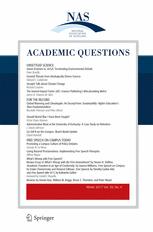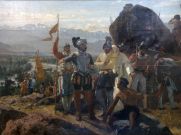When Kate Turabian first published her student guide to the Chicago Manual of Style, known by composition teachers the world over as “Turabian,” in 1937, its full title was simply A Manual for Writers of Dissertations. The newer, longer title still pays lip service to those poor souls toiling over their doctorates, but its expansion points to a shift in Turabian’s primary audience over the past seventy years. Today, the manual serves—at least, it is assigned to—mainly high school students and college underclassmen. I doubt that many Ph.D. candidates need to be informed, for example, that “you can handle any project if you break it into its parts,” or that in a research paper “we must do more than just state an opinion and describe our feelings.” But maybe I hang out with exceptionally bright grad students.
In comparing the newest Turabian manual to its most recent edition, from 1996, the first thing I noticed was its increased size—about fourteen square inches more surface area and 150 pages longer. This new bulk led me to suspect that substantive changes had taken place beyond the usual pro forma revisions that textbook companies churn out every few years. So what is new this time around?
Some of the additions are related to advances in computer software and the Internet which, while not entirely new, are more dominant than they were ten years ago. The preface states the obvious: students today “inhabit a world filled with electronic technologies that were unimagined in 1937.” They weren’t exactly “unimagined” in 1996, but this part of the old edition really did need to be revised. Its preface made similar comments about the new prevalence of computers, but strangely, little evidence of the tech revolution appeared in the text. Debates about the merits of word processors over typewriters, or daisy wheel over dot matrix printers, were out of date even before they were published. The editors also seemed oblivious to the irony that they recommended using computers and Times Roman font for research papers, but all of their illustrative examples were set in the typewriter font Courier. Guidelines for the citation of Internet sources warranted only a single page, and contained no warning to students about their general unreliability.
The new edition corrects all of these genuine shortcomings. Times New Roman is used throughout, as well as flashy blue section headings, and new sections give advice about formatting text in Microsoft Word, converting documents to Portable Document Format files, and other soon-to-be-obsolete tips (Times New Roman itself may soon go the way of the dot matrix, if Word 2007’s new default “Calibri” catches on). Citation of electronic sources rates entries in three separate chapters, which include guidelines, as well as ample cautions, about using “informally published” sources like blogs. The editors come down especially hard on Wikipedia.
On a related note, they also spend a good deal of time defining and warning against plagiarism—a problem that seems to have grown worse with the advent of online file-sharing. I say “seems to have” because technology can work both ways. The Internet does make it easier for students to cheat, but it also makes the cheaters easier to catch. The new Turabian is in tune with this development, and it bends over backward to make sure students understand not only the seriousness of plagiarism but every nuance of the term. The sixth edition took a single paragraph to point out that failing to cite sources was wrong, the assumption being that uncited material was deliberately stolen and nothing more needed to be said. The new edition recognizes that plagiarism can be inadvertent but, to its credit, explains that this is no excuse. “Don’t plead ignorance, misunderstanding, or innocent intentions,” one section heading reads—good advice to the student who finds himself in front of an academic discipline committee.
This last headline appears in the new 130-page first chapter, “Research and Writing: From Planning to Production,” which is responsible for most of the seventh edition’s increased bulk. The new chapter is also the reason three new authors are listed on the title page—Gregory G. Colomb, Joseph M. Williams, and the late Wayne C. Booth—since it is a revised excerpt from their 1995 book, The Craft of Research. The chapter (Part I, to be precise) works well for what it is, a primer on how to start and sustain a research project, though it does cement Turabian’s reputation as a manual for beginners. “Advanced researchers may wish to skim chapters 1–4,” the preface wisely advises; and for “advanced researchers,” read “most college freshmen.” At this point, truly advanced researchers should probably bite the bullet, pick up the unabridged Chicago Manual of Style, and skip Turabian altogether.
This is not to say that the additions are without value. The preface suggests that for teachers, Part I “may help you explain what you know to your students more effectively.” This may, in fact, be its best use, since its advice mirrors much of what I have personally repeated ad nauseam in my own writing classrooms. A few sections—the tips on evaluating research questions, checking the reliability of sources, creatively engaging with secondary sources—could serve as the basis for good class discussions. Others, like the suggestion to “organize a writing support group,” or the list of places one might find sources—the Internet, online card catalogs, reference books, the library’s shelves—are self-evident to the point of condescension.
The chapter on “Revising Sentences” would do William Strunk and E.B. White proud, though Strunk and White cover the same ground more thoroughly, and with more gusto, in their classic Elements of Style. The conclusion of Turabian’s new stylistic advice also evinces a cynicism about academic prose that would promise hope for the future if young students took it to heart:
So when you struggle to understand some academic writing (and you will), don’t blame yourself, at least at first....[T]he problem is probably not your inability to read easily, but the writer’s inability to write clearly. In this case, unfortunately, the more experience you get with academic prose, the greater your risk of imitating it.
A few sections of Part I may work as assigned readings, though I can reliably say that no college student will actually read them without heavy incentives or threats. If they do, they are likely to complain—as my students did, after reading a similar portion of the MLA Style Manual—that they are being talked down to, like “eighth grade all over again.” Like most academic writing aimed at lower-level students, the prose imagines a reader who is eager to learn but painfully short on self-confidence. The writers tend toward the grandiose on occasion, especially in their conclusion. This section, entitled “On the Spirit of Research,” waxes eloquent about the importance of evidence-based research challenging settled beliefs, “in our worlds of work, scholarship, civic action, and even politics.”
They also tend to depict a civil, orderly academic world that doesn’t exist. For instance, they cleanly divide the types of questions researchers ask into two categories: “conceptual” and “practical.” Academics ask the conceptual questions, while businessmen and politicians deal only with the practical. If this were true, there would be no better advertisement for business school, but alas, it is not. “Most of the academic world,” Colomb and company say, “sees its mission not as fixing the problems of the world directly, but as understanding them better (which may or may not help fix them).” In reality, many professors’ notion of “understanding” the world means crafting ever more radical theories about why it doesn’t work, and lamenting that the rest of us don’t change our wicked ways—which may or may not earn them publication and tenure. In my own seemingly innocuous field of literary study, outrage against the Bush administration finds its way into the most unrelated topics, and works of theory often read like Marxist, feminist, queer, or postcolonial manifestos by crusaders ready to start the revolution. One need only observe how many faculty members take part in protest marches, sign “open letters” to newspapers, and denounce unpopular graduation speakers to see just how many academics have given up on “understanding” and set about the dubious work of “fixing.”
Overall, though, Turabian’s added features are a distraction rather than a detraction from the Manual’s permanent virtues. Parts II and III are somewhat reorganized, but they hold the same attractions they always have, as summaries of the sections of the Chicago Manual of Style most relevant to students. They present two alternate styles for formatting, provide guidelines for source citation, and recap the most common grammatical and stylistic issues. The complete Chicago Manual of Style, now in its fifteenth edition and with a cover price of $55, is more of a reference work than a guide. It covers multiple formatting styles and more fine points of grammar and style than anyone would ever hope to encounter—the kind that “advanced researchers” constantly have to look up. As a teacher, you do your starving students a kindness by assigning Turabian, at $17, but soon enough they will need to graduate to the real thing.












